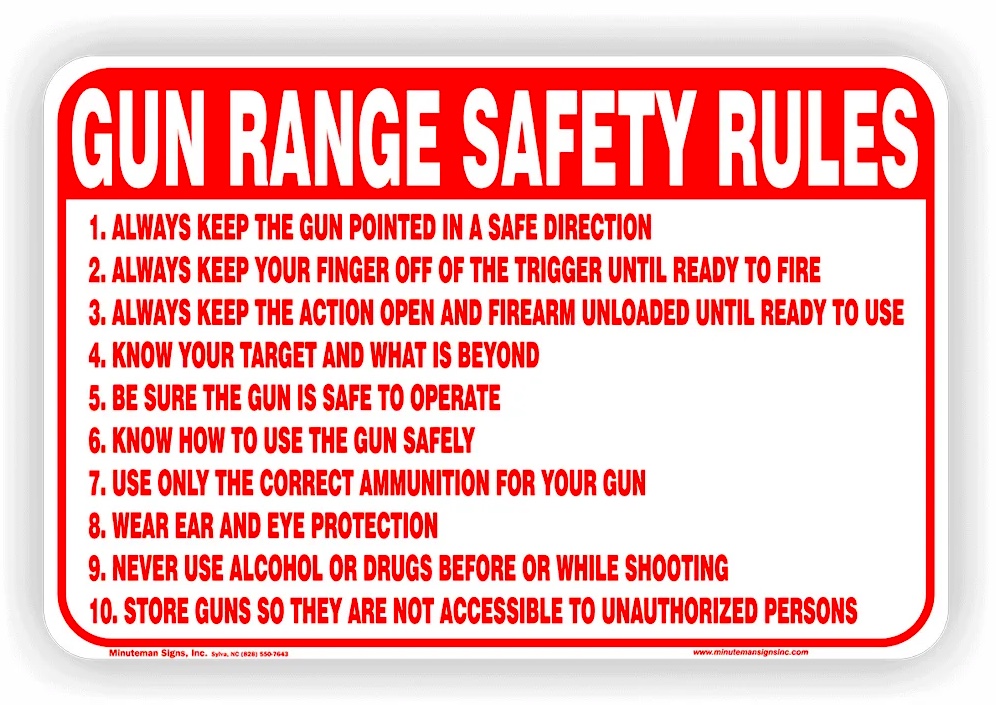Essential Safety Rules, Do’s and Don’ts for a Perfect Day at the Shooting Range

As seasoned veterans in the shooting sports world, we understand that etiquette and safety are paramount. We have been there, from the heat of battle to the thrill of big game hunting, and our experience has shaped our dedication to responsible firearms handling. We want to share with you our top tips for maintaining proper gun range etiquette and safety.
Gun Range Safety Rules
Importance of following safety rules
Safety should always be your top priority when handling firearms. Following safety rules helps prevent accidents, promotes a positive shooting experience, and demonstrates respect for other range users. Being a responsible gun owner means not only knowing how to use your firearms effectively but also how to handle them safely.
General gun range safety rules
- Always treat firearms as if they are loaded.
- Keep your finger off the trigger until ready to shoot.
- Never point a firearm at anything you do not intend to shoot.
- Be aware of your target and what is beyond it.
CROSSHAIR Shooting Bench-specific safety rules
- Proper use of the bench: Ensure that both individuals are positioned correctly, and the firearms are properly supported on the bench.
- Guidelines for sharing the space with another shooter: Communicate clearly with your shooting partner and respect their needs and preferences. Maintain awareness of each other’s actions and coordinate shooting breaks for target checking or adjustments.
Gun Range Do’s and Don’ts
| Do’s | Don’ts |
| Wear appropriate protective gear (ear and eye protection) | Handle firearms when others are downrange |
| Familiarize yourself with range rules and regulations | Rapid fire without proper training |
| Ask for assistance when needed | Use other shooters’ equipment without permission |
| Keep your shooting area clean | Distract or disturb other shooters |
Proper Gun Handling at the Range
Loading and unloading firearms
When it comes to loading and unloading firearms, always follow the basic safety rules we mentioned earlier. First and foremost, ensure that the muzzle is pointed in a safe direction. When loading, insert the magazine or ammunition into the firearm and confirm that it is properly seated. For semi-automatic firearms, pull back and release the slide or bolt to chamber a round. Double-check that the safety is engaged before setting the firearm down.
When unloading, point the muzzle in a safe direction, remove the magazine or ammunition, and lock the action open. Visually and physically inspect the chamber and magazine well to ensure that the firearm is clear of any ammunition. Always remember to keep your finger off the trigger during this process.
Muzzle control and awareness
Muzzle control is a crucial aspect of safe gun handling. Always be aware of where the muzzle of your firearm is pointing and ensure it is directed in a safe direction. At a gun range, this typically means pointing downrange, parallel to the ground. Avoid sweeping the muzzle across other people, even if you know the firearm is unloaded.
Proper shooting stance and grip
A solid shooting stance and grip contribute not only to accuracy but also to safety. A stable stance will help you manage recoil and maintain control of your firearm. For most shooters, an isosceles or modified Weaver stance works well. Your feet should be shoulder-width apart, knees slightly bent, with your weight centered over your feet. Lean slightly forward, engaging your core for stability.
When it comes to grip, hold the firearm firmly but not too tightly. Your dominant hand should grip the gun high on the backstrap, and your support hand should wrap around the dominant hand, with both thumbs pointing forward. This grip will help you control recoil and maintain a consistent sight picture.
Safely clearing malfunctions
Firearm malfunctions can happen, and knowing how to safely clear them is essential. The most common malfunctions include failure to feed, failure to extract, and double feeds. To clear a malfunction, follow these steps:
- Keep the muzzle pointed in a safe direction and your finger off the trigger.
- Remove the magazine or ammunition source.
- Lock the action open.
- Visually and physically inspect the chamber and action to determine the type of malfunction.
- Clear the malfunction by manually extracting the round, if possible, or using a cleaning rod or other suitable tool.
- After clearing the malfunction, double-check that the firearm is clear before reloading and resuming shooting.
Proper storage of firearms when not in use
When you’re not actively shooting, store your firearms securely and safely. Unload the firearm and engage the safety (if applicable). For additional safety, use a chamber flag to indicate that the firearm is clear. Store your firearms in a case or on a rack, with the muzzle pointing in a safe direction. When you’re finished shooting for the day, clean and store your firearms in accordance with the manufacturer’s recommendations.
Benefits of Practicing Good Gun Range Etiquette
Enhanced safety for all range users
By following proper gun range etiquette and safety rules, you help create a secure environment for everyone at the range. This not only prevents accidents but also fosters trust and camaraderie among shooters.
Efficient and enjoyable shooting experience
Adhering to gun range etiquette ensures that everyone has an efficient, enjoyable shooting experience. When everyone is respectful and follows the rules, waiting times are reduced, and distractions are minimized, allowing you to focus on improving your skills and enjoying your time at the range.
Development of responsible and respectful gun handling habits
Practicing good gun range etiquette will instill responsible and respectful gun handling habits that will last a lifetime. By demonstrating proper etiquette, you set an example for others, particularly new shooters, and contribute to a culture of safe firearms ownership and usage.
Happy Shooting!
Gun range etiquette and safety rules are essential for an enjoyable, accident-free day at the shooting range. By treating firearms with respect and adhering to the guidelines we’ve discussed, you can ensure a safe and efficient experience for everyone involved.
